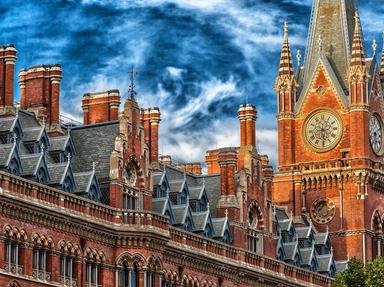Quiz Answer Key and Fun Facts
1. Every August over the final Bank Holiday weekend of summer, over one million people attend a festival-like parade in West London. With a substantial Caribbean flavour and a party atmosphere full of music, dancing and food, which annual London event is this?
2. Two of the world's oldest universities (incidentally neither of which is situated in London) take part in a yearly race from Putney to Mortlake. Held each year in March, which race is this?
3. Each year on the day before Good Friday, the reigning British monarch gives out sets of specially minted coins to a number of pensioners determined by the monarch's age (one man and one woman for each year). What annual event is this?
4. Held in the Widow's Son Pub by Devons Road, East London, this ceremony has taken place at noon on Good Friday every year for over 150 years. It involves the addition of which Easter favourite food to a pile that has been built up over 150 years?
5. Held in May each year, this annual church service is held at St Paul's Church in Covent Garden. It sees dozens of men dressed up as puppets for the day, heckling and interjecting rude comments into a sermon. The service is followed by a brass band procession and puppetry performances all afternoon. What annual, slightly bizarre, London tradition is this?
6. In July of each year, all unmarked mute swans on the River Thames are rounded up, marked and released back onto the river. The ceremonial marking of the swans allows a register to be kept and has a special name. What is the name of this annual London event?
7. At the Church of St. Katharine Cree in central London, a special sermon takes place on 16 October to commemorate the terrifying animal experience of John Gayer, Lord Mayor of London, in Syria in about 1630. What sermon is this?
8. This rather meaningless ancient ceremony is held on a Wednesday afternoon in October each year, and involves the City Solicitor of London cutting hazel rods before presenting them (along with six horseshoes and 61 nails) to the Queen's Remembrancer as rent for a piece of ground in Shropshire. Any ideas what annual ceremony this is?
9. Each year on 19 May, an odd ritual takes place at the Church of St Peter in Chains within the Tower of London. A florist, acting for a strictly anonymous party, lays a dozen red roses on the grave of a famously beheaded queen. This ritual has gone on for more than 160 years. Whose grave are the flowers laid upon?
10. On the third Sunday in September each year, a special church service is held at St John's, Hyde Park in London. What is special about it?
Source: Author
suzidunc
This quiz was reviewed by FunTrivia editor
Pagiedamon before going online.
Any errors found in FunTrivia content are routinely corrected through our feedback system.
